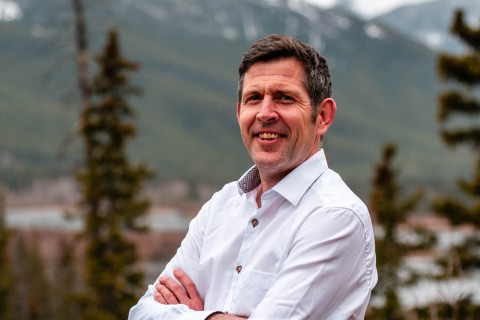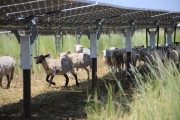In the Government of Alberta's mad rush to sell off the rights to oil and gas resources under every last square inch of forest and farm, some are wondering what will be left once the coming wave of development rolls across the land.
In just 12 months the oil and gas rights have been sold for 2.8 million hectares of land-an area almost the size of Vancouver Island. This is the first ripple of the waves of development that will collide with landowners, wildlife, forests and prairie, over the next five years, as individual oil and gas companies apply to exploit the resource rights they have been granted.
In a province dripping with oil revenues it makes sense to develop non-renewable oil and gas resources wisely, in ways that protect the renewable forest, land and water resources and, as importantly, use the spoils of the non-renewable fossil fuel era in ways that lead to a diversified and sustainable future economy.
The problem is that Alberta Energy is running the show, and these sales have outstripped the government's ability to look after the public interest. Rather than actively managing where and when oil and gas rights are sold off, the government accepts bids on virtually any scrap of land at the whim of any interested oil and gas company. Perhaps not surprisingly, there is no evidence that any assessment of the environmental or community impacts associated with the allocation of these rights occurs. In fact, there is not even a test to determine whether granting these rights, and the associated access to land, is even in the public interest.
With no transparency about how land sale decisions are made and no consideration of either the cumulative environmental effects or competing land uses in allocation decisions, land use conflicts and increasing environmental impacts are emerging at alarming rates across the province.
The potential for sour gas drilling near the outskirts of Calgary has people there living in fear for their future, endangered caribou are facing wave after wave of oil and gas development in Alberta's foothills and may not survive, ranchers are up in arms about the cumulative impacts of oil and gas developments on native prairie on the Eastern Slopes and foresters fear significant and unexpected losses in the "renewable" forest resource. The reasons for these symptoms are the same: Alberta Energy continues to dispose of oil and gas rights in a vacuum.
Last year alone, Alberta Energy sold an additional 355,000 hectares of oilsands leases, even while the Municipality of Wood Buffalo struggles to provide services to local residents, and Alberta Environment has not even set caps on the skyrocketing amount of fresh water being used by the industry.
If you are curious to see what Alberta will look like post oilsands go to Google Earth, find Fort McMurray, and there you will see the oilsands operations to the north. Now imagine development 10 times larger.
In a nonsensical cart-before-the horse fashion, Alberta sells development rights and then tries to set rules about the appropriate levels of development.
Alberta clings to an archaic oil and gas tenure model that hasn't changed much since the 1950s. Incorporating other values into the tenure process is not complex. In the Muskwa-Kechika area of British Columbia, the Government of British Columbia uses pre-tenure planning to identify environmental objectives before land is leased for oil and gas development.
This is the equivalent of having blueprints before we build the house of Alberta.
Alberta's oil and gas tenure system can easily be brought up to date by incorporating a few key principles: plan for the landscape that you want 50 years from now, ensure the public has input into tenure decisions, involve the public in regional planning and, in the long run, save money on costly battles over surface access rights on a well-by-well basis.
Alberta Energy boasts that Alberta's tenure system is considered by industry to be the best in the world.
That is part of the problem-a cozy arrangement between a government department focused solely on land sales revenues and the oil and gas companies that are stampeding to extract Alberta's resources.
Solving this is not rocket science. It just means Alberta becomes a wise investor of its inheritance. The payoff will be a sustainable future economy, a healthy environment and a high quality of life.







